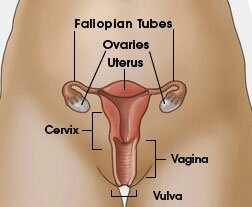In my recent article about woman’s cycle, I only briefly touched upon the topic of birth control. We hear various thoughts on the topic, from medical to political, but I don’t often hear an anthroposophic perspective, meaning, one which takes into account the wisdom of the human being.
There is much discussion about the inarguable importance of sexual responsibility, avoiding unwanted pregnancies and preventing the contraction and transmission of certain diseases. While some popular methods may have an appropriate place, there is something critical missing from the discussion altogether.
First of all, there is a devastating silence in our society about the power of our bodies and our minds. That silence seems to me linked to this amnesia that many people have about their own ability to take control over their sexuality. We forget that we live in our bodies and that, while our bodies are influenced by various forces that steer us toward or away from sexual desire, we are also the deciders of how to process and cultivate our desires. In American culture, I hear many men and women easily victimize themselves, as though they have no control over their sexual drives or no choice in their sexual actions. This victimization is a very primal and animalistic attitude that begs the question of what it means to be a conscious human being. Quite the contrary, we all have the capacity to cultivate the willpower necessary to make appropriate choices when it comes to our sexuality and when we choose to act on desire and when we choose to abstain.
Further, there seems to be a complete denial of the nature of human sexuality (male and female) and the appropriate work for us to do in that sphere. Because the nature of masculine and feminine are different, the work necessary to cultivate humanity within our sexuality too, will be different. The nature of the masculine is penetrating and the work will be largely about containment. Alternatively, the nature of the feminine is enveloping, and the work will be about setting appropriate boundaries. Men and women alike have the option to desist and resist from giving or receiving, respectively, the sexual desire which is not appropriately timed with natural human cycles.
The human female will naturally experience times of great fertility and times of infertility during the course of a woman’s cycle. This means that there are optimal times during a regular cycle that we can choose to act upon sexual desire if we are aiming to conceive. Also, during the cycle, there are specific opportunities we have to act upon desire even if we are aiming to avoid conception, and there are times we ought to abstain if we are aiming to avoid conception.
This approach to birth control is most commonly referred to as “fertility awareness-based methods.” These might include the “calendar-based method” (or “rhythm method”) and the “symptothermal method.” These practices require a woman to be open, aware, willing, and able to recognize and record patterns throughout her cycle. To avoid conception, women abstain from intercourse during days of peak fertility.
Calendar-based methods determine fertility by calculating the length of a woman’s cycle (from one menstrual period to the next). A calendar is necessary for this, numbering the days of a woman’s cycle with Day One being the day a woman begins menstruation. With a regular cycle, a woman will generally be infertile the first and last weeks of her cycle and fertile the week before ovulation (mid-cycle) and the week after.
Symptothermal methods consider factors that change throughout a woman’s cycle, which are basal body temperature, cervical mucus, cervical position, mood, and even weight. Becoming acquainted with these does take time and it is useful to have a thermometer as well as a place to record symptoms directly next your bed. Temperature must be recorded first thing in the morning, before rising from bed, going to the bathroom, or taking a sip of water. At the time of ovulation, a woman’s temperature will rise by half a degree to a degree and a half. After a few months of diligently recording temperature every morning, the rise that occurs mid-cycle will make it very obvious when a woman is ovulating. Cervical mucus varies from woman to woman, but will generally change throughout the cycle. The first few days following menstruation, mucus is usually minimal to nonexistent, signifying least fertile days. It then turns to a cloudy white for a few days and eventually to clearer, stickier mucus just around ovulation. This mucus is associated with times of greatest fertility. Following this, there will be another few dry days just before menstruation and these days are infertile. These generalizations may not apply to all women and assessing fertility will depend on whether a woman’s cycle is “regular” (following a certain pattern over a length of time). Cervical position and texture also fluctuates throughout a woman’s cycle. Generally, the cervix will be lower, harder, and closed during infertile times, and will gradually move higher, become softer, and open up during more fertile times. Tracking mood is going to be a profoundly unique and individual experience for each and every woman and it will be her job to understand what tendencies, habits, drives, cravings, aversions, and intolerances might correlate with different times of the cycle.
These practices require a woman to forge a more intimate relationship with her body than she may be accustomed to, to trust and respect her findings and feelings, and to take a greater responsibility for her decision-making. Although difficult for many women, there is profound value in time spent with oneself, in acquainting oneself with one’s own body, in discovering a pride, a trust, and a beauty in one’s sexuality. There is such potential for these habits to instill a sense of empowerment, appreciation, confidence, health, and vitality.
It is understandable and somewhat expected that there may be some reservation or even embarrassment in developing these practices. This may be the case because practices that involve exploring the body are not often spoken about openly in many communities or families and may even be couched in confused guilt or shame about sexuality. Any misguided beliefs are frequently transmitted from parent to child, teacher to student, community member to community member, and shroud many of us in a fear or apprehension regarding our bodies and our sexuality. We must recognize these ideas as confusions, stemming from fear, and limiting our power and potential. We must remember that we are human, and with that, comes a great role and a great responsibility to know and name our nature very explicitly, in a way that other animals may not. Further, it calls us to embrace and revere our wisdom and our nature.
Another difficulty that may arise is the question of just how effective these methods are. If the calendar-based methods are used improperly, as in the case of a woman failing to track the length of her cycle correctly, the effectiveness is greatly reduced. However, even when correct numbers are used in the calculations, there are many claims against these methods because the calculations assume that a woman’s cycle will fall within the “normal” or expected range of 26-32 days, that ovulation will occur sometime between Day 13 and Day 16, and that the preovulatory and postovulatory phases will fall within a certain range. Some of these methods will also use records of a woman’s last menstrual cycles and assume a pattern, however, even if there are natural rhythms that we are all a part of, there can be great variation in these phases, numbers, and calculations. Illness, medication, travel, trauma, menopause, breastfeeding, as well as other hormonal changes or stress factors may connect to an unusually early ovulation or a delayed ovulation. Miscalculating the time of ovulation means misunderstanding days of fertility and days of infertility, thereby reducing the effectiveness of the method to avoid conception.These are the reasons these methods may be any less effective than more conventional contraceptive methods.
Symptothermal methods are considered more effective as there are fewer assumptions and generalizations embedded within the system. Providing that a woman interprets her symptoms accurately (for example, recognizing cervical mucus as cloudy rather than sticky or being familiar with the feeling of the cervix being lower and firmer as opposed to higher and softer), she is able to identify fertile and infertile times with accuracy and will consequentially abstain from intercourse at the appropriate times, thereby making the method highly effective. Undoubtedly, familiarizing oneself with cervical mucus, cervical position, and mood will take a fair amount of time, attention, and refining to ensure accurate assessments based on those observations. If employing these methods to avoid contraception, it is wiser to allow time to recognize any patterns and to assume that one is fertile for longer than suspected, on both ends of the cycle (the preovulatory phase and the postovulatory phase).
In addition, a combination of calendar-based methods and symptothermal methods dramatically increases the effectivity of birth control. Therefore, it would be wise to consider all of these factors and make conscious and intelligent decisions based on more than one. Just because it is Day 7, and you believe you are supposed to be infertile at that time, it is certainly worth checking one’s body temperature, cervical position, mucus, weight, records of past cycles, and considerations of any illness, medication, hormonal shift, or traumatic or stressful events that may influence one’s cycle.
All of these methods are exactly as they have been named: “awareness-based.” In order to use these methods effectively, a woman must be committed to a lifestyle of consciousness and curiosity. There ought to be a willingness to learn, to explore, to experiment, and also to exercise caution and communicate clearly with a sexual partner. Discipline is necessary as there ought to be a consistency in observations and records of those observations, making it more possible to learn patterns and draw connections, increasing the effectiveness of these methods. It is our responsibility, as women and human beings, to become acquainted with and to honor the cycles and patterns that we are inevitably interwoven with.


Thank you for sharing your insight – I devour your words with every post. I appreciate both the male and female perspective on this very important topic. While I am moving beyond the child-bearing years, it is still an important reflection on the roles of men and women as it relates to our cycles of sexuality. The same awareness of a monthly cycle can be applied to the overarching life cycle of sexuality for both men and women. Understanding and being sensitive to the fluctuations in fertility over the decades can lead to a deeper connection, commitment and responsibility to the human family. As you both have indicated, many women, and (correspondingly) men, are very disconnected from this basic cycle of life. This is also true as it pertains to youth and aging and fertileness. Thank you for the reminder to become aware of this elemental aspect upon our very nature. You both are wonderful writers.